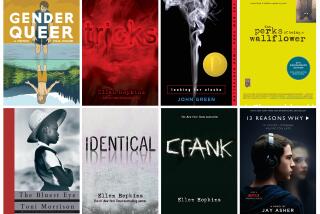A flood of empathy
- Share via
CHRIS JORDAN, the Seattle photographer who made his name with dense images of consumer society’s debris, headed to New Orleans 10 weeks after Hurricane Katrina hit, out of both curiosity and what he calls “my feeling of personal responsibility.” Even as just one of the 6 billion or so who’ve driven recent climate change, he couldn’t shake feelings of guilt. “Three hundred thousand people in my own country losing their homes and personal belongings,” he says. “It’s like global warming came home to our own family.”
What Jordan found in and around New Orleans and what he’s captured in his first book, “In Katrina’s Wake: Portraits of Loss From an Unnatural Disaster,” was “the most shocking landscape I’ve seen in my life. It took me a while to be able to connect with my own feeling of loss. It’s like the experience of being in a family where someone dies of a drug overdose: First it’s about them. Then, when the shock wears off, everyone realizes, ‘We’ve all lost something.’ ”
Unlike most post-Katrina photography, Jordan’s has no people in it. Instead, it evokes the eerie calm of an Antonioni film: a cast-off purse hanging from a tree branch, an old-time radio partly buried in a canal, the rusted interior of a church piano. “I’ve seen thousands of images from disasters. We all have, our whole lives,” Jordan says. “What I care about in Katrina is not so much trying to evoke sympathy for the victims as trying to connect with my own sense of loss for what has happened to our nation.
“When I know to take a photograph is when I see something that’s outside my experience,” he says. “On the Gulf Coast after Katrina, I recognized most of what I saw. There were a lot of sensational scenes -- houses on top of cars, or boats coming out of people’s roofs. I consciously avoided photographing those things. After a few days of just feeling shock, I just connected with my own grief. I sort of followed that.”
All profits from “In Katrina’s Wake,” which was published by Princeton Architectural Press and includes essays by Bill McKibben and Susan Zakin, will go to the disaster’s victims.
-- Scott Timberg
More to Read
Sign up for our Book Club newsletter
Get the latest news, events and more from the Los Angeles Times Book Club, and help us get L.A. reading and talking.
You may occasionally receive promotional content from the Los Angeles Times.






